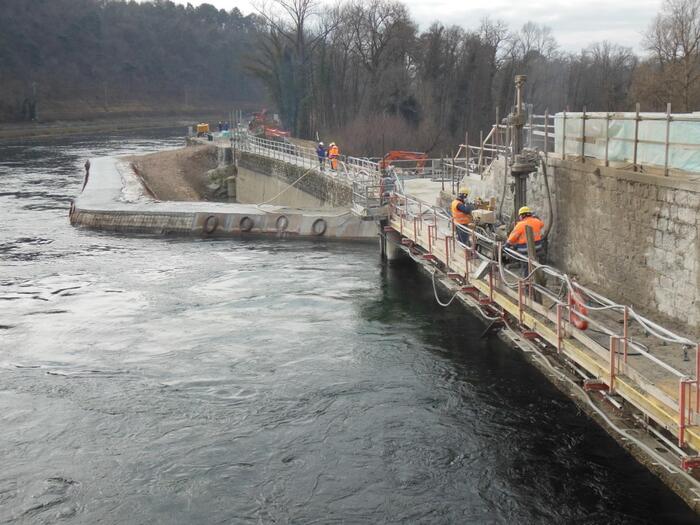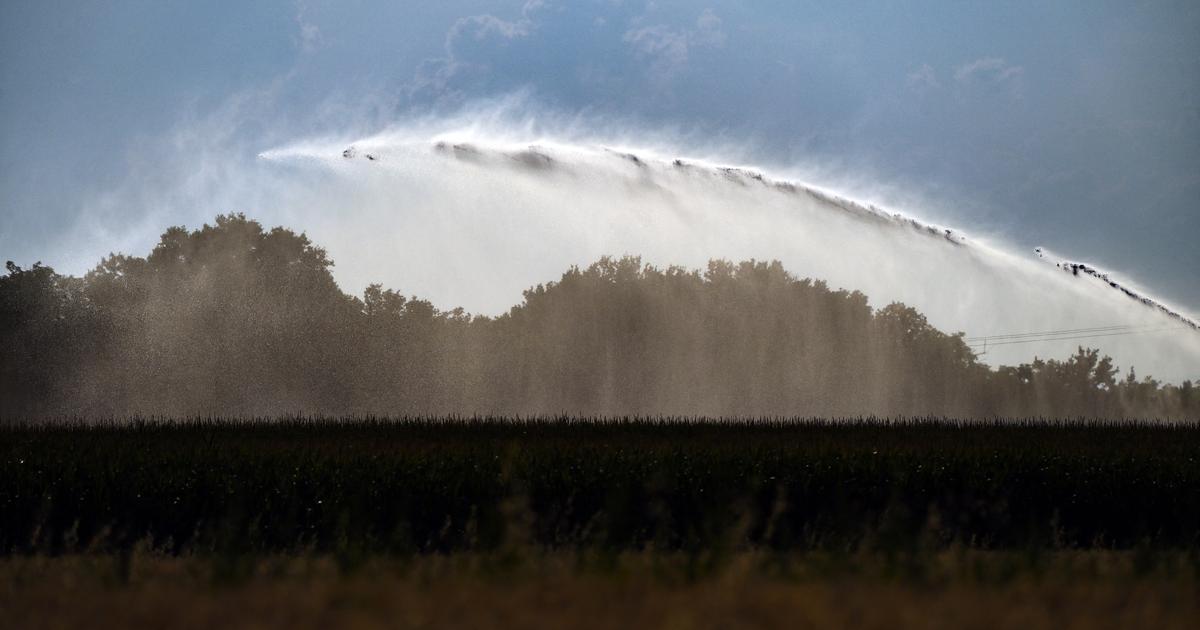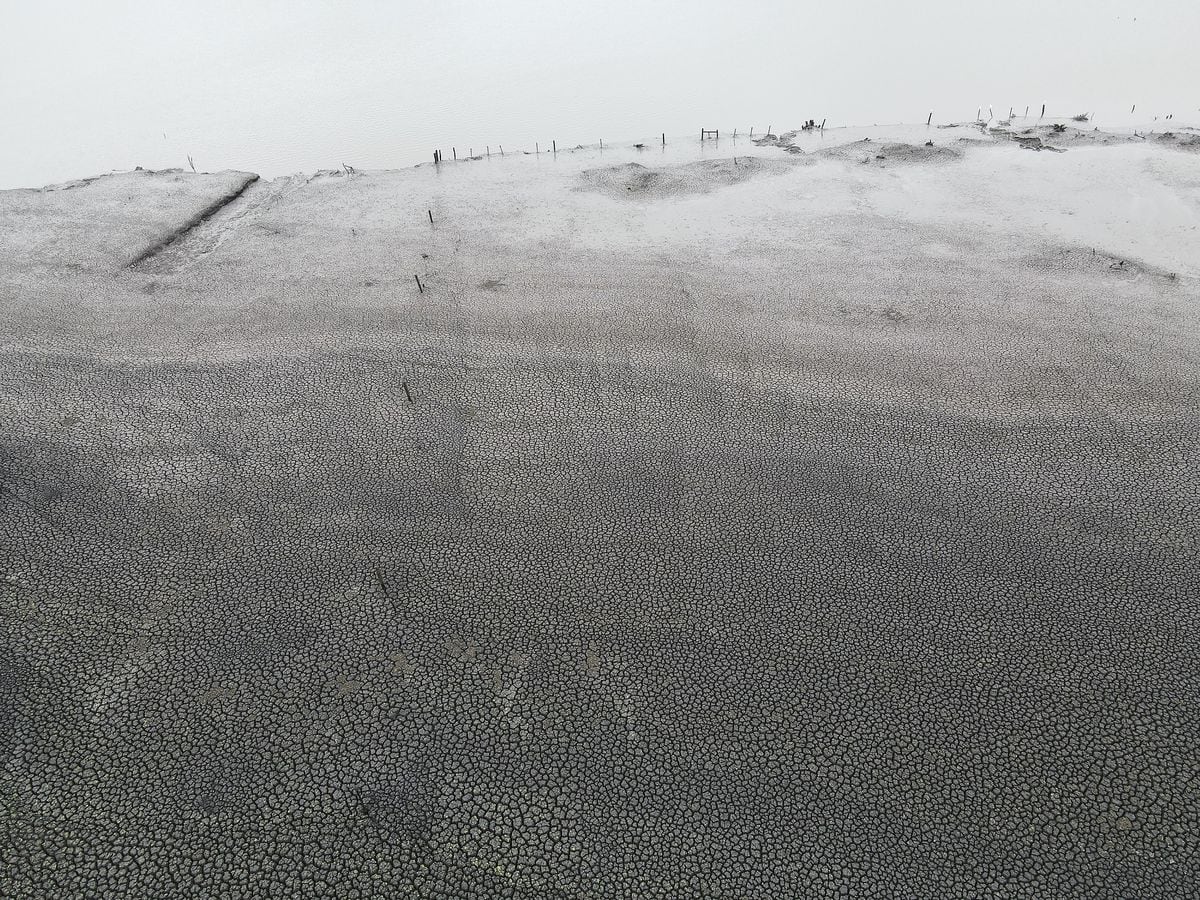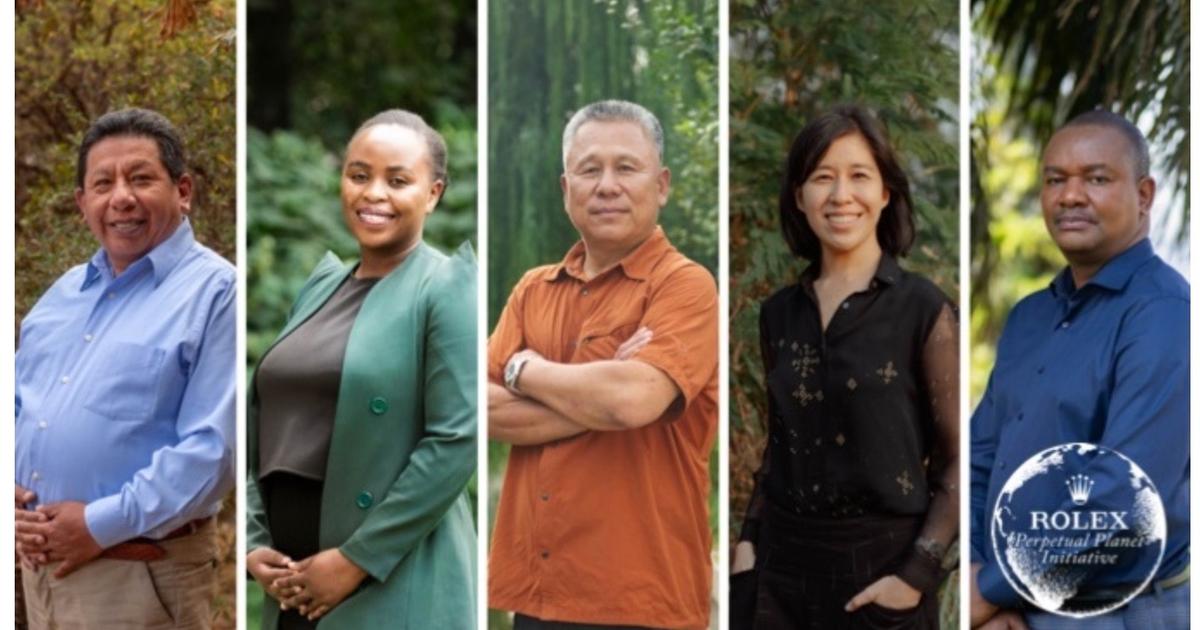Damascus-Sana
The efforts of the Ministry of Water Resources during the year 2020 focused on improving the reality of drinking water in the governorates, developing the sanitation system, working to lift pollution from water sources, expanding water harvest projects, searching for suitable sites for the construction of dams and water dams, in addition to rehabilitating irrigation and land reclamation projects to introduce the largest possible area for agriculture And contribute to achieving food security.
In the field of irrigation and dams, the Ministry has implemented a number of important projects to secure drinking water, including Al-Waghar Dam in the Damascus countryside to prevent flooding from the city of Nabek, while work is underway to implement the Faki Hassan Dam in Lattakia by storing 1.8 million cubic meters, the Balouta Dam in Tartous with storage of 2.5 million cubic meters, and the Dreikish Dam in addition To complete work on the Bradoun Dam in Latakia Governorate, with a storage volume of 140 million cubic meters.
The Ministry has also implemented 18 water dams in various governorates, and 9 dams are currently being implemented, namely, Mina, Ain Dalima, East Hattin, Ain Al-Tina, Maryamen, Al-Khansa, Al-Mardash, Kafr Aqeed and Al-Hatriya, and there are 3 dams under contract, namely Al-Issawiya, Al-Faraq and Al-Sabahiya, in addition to 23 dams under study, and the rehabilitation work of Al-Haffah Dam has been completed. In Latakia, and continuing work to rehabilitate Al-Ghaydah Dam and rehabilitate the spillway of the Revolution Dam
In Hama, a section of the main drainage from the Al-Asharna Bridge towards the Al-Hurat Bridge with a length of 7 km was completed, and the two canals C1 / C2 were rehabilitated within the reclamation projects of 3000 and 3564 hectares in the forest, and the hydraulic connection between the Salhab Dam and the southern irrigation canal was carried out with the irrigation network in Tar Al-Ula - Asharnah.
The Ministry has also completed the implementation of the storage basins of the Al-Sen spring in the Lattakia Governorate, where the fifth phase has been implemented, and currently work is underway on the completion of the sixth and final phase of the project, with a total storage volume of 825 thousand cubic meters of water, in addition to removing the course of the Barada and al-Awj River and their branches, removing the dams and removing the waterways in the regions. Hazarma, Al-Salihiya Wahsh, Ain Al-Zorika, Al-Nashabiyyah, and Al-Maydaani in the countryside of Damascus. The northern Mushfif dam was also rehabilitated, the implementation of the wells of Al-Mukarramah was completed in the Sweida governorate, and the two channels MC / BC1 were rehabilitated to irrigate 9,000 hectares of eastern Ghouta lands.
In view of the importance of the irrigation sector and its great role in agriculture and achieving self-sufficiency, the Ministry of Water Resources placed among its priorities the restoration of irrigation projects and the repair of the damage it suffered as a result of terrorism, including the completion of the rehabilitation of pumping stations, irrigation and drainage networks in Al-Mughala Al-Bu Hamad Al-Suwaida to irrigate 6000 hectares in Al-Raqqa governorate and rehabilitate 3000 hectares From the southern plains of Aleppo and putting them into service to achieve economic return and social stability for the beneficiaries who number 3,488 families in addition to continuing work to rehabilitate the Assad facility to irrigate 17,000 hectares, rehabilitate the pumping stations and irrigation networks in the third sector in Deir Ezzor to irrigate 10,700 hectares and finish implementing 3 important bridges to serve the citizens Cables - Zaaria - Balat, rehabilitating the fifth sector in Deir Ezzor, which irrigates about 3,500 hectares, and maintaining the irrigation and drainage networks in the Maskanah West and Maskanah Sharq projects to irrigate about 52,000 hectares in Aleppo and Raqqa.
In the field of drinking water, the Ministry has endeavored to secure safe and clean water, to achieve justice in distribution to all population centers and to increase the water resources allocated for drinking to keep pace with population growth and demographic changes. The drilling and equipping of 253 wells were completed during the current year, the implementation and maintenance of 25 water tanks of various sizes, and the replacement and renewal Pipes for water networks with a length of 312 km, in addition to the maintenance and supply of 254 water pumps, the installation of 55 electric generating sets of various capacities, and the implementation of 153 contracts for various equipment and works. The cost of these works reached about 37 billion Syrian pounds.
Among the most important drinking water projects implemented during the year in Damascus are the rehabilitation and equipping of a number of wells in the countryside of Damascus and Eastern Ghouta, the implementation of a drinking water purification plant in Utaya, the replacement of drinking water networks in the towns of “Nabek, Hala, Jandal Castle, Jerud and Ras al-Maarah” and the extension of new networks to serve modern residential communities. Youth and the suburbs of Al-Faiha and equipping 9 wells in Alsumaria and connecting them with the reservoir with a production capacity of 7200 cubic meters per day and equipping 6 wells of the People's Palace and connecting them with the reservoir with a production capacity of 4800 cubic meters per day in addition to rehabilitating the pumping centers "Douma Makassir - Douma stadium-Douma Corniche" Al-Rima pumping center and follow-up work On the project to lift pollution from the Barada River and its branches.
As for Aleppo, the rehabilitation and equipping of 25 pumping centers in the countryside of Aleppo, 7 centers under delivery, in addition to 20 centers under preparation in various parts of the governorate, the extension of a 600 mm diameter pumping line from the al-Faid station to the Tishreen reservoir, and the extension of water networks in Sheikh Zayat, Sheikh Najjar and Kafr Saghir Digging a well, improving the water network in Nubl, equipping the Zahraa and Shagidliya wells, and completing the implementation of the Jab Ghabsheen project.
In Homs, the Dibeh project was implemented to irrigate al-Dibeh, al-Manzul, and Raqqa, in addition to replacing the sewage networks in the suburb of al-Walid, establishing a 500-cubic-meter land reservoir in the town of al-Qabu, and linking projects with electrical current, including “al-Dibeh, the old Akom, the Jabal neighborhood of Batelakh, and Battisah al-Jarad, and the completion of the implementation of the project. Soukra and the surrounding villages, in addition to the Shanshar water project.
In Hama, the implementation of the fourth phase of the second traction line for the Upper Al-Asi water was completed, which would secure drinking water for about 65 communities. The wells of “Zamiliyah - Khirbet al-Qasr - Ma'rin al-Salib - Salhab-Maarda” were also dug, as well as the implementation of pumping lines and Qamhana tanks, in addition to replacing and renewing the main networks. And the subsidiary in the areas of “Al-Shajar, Al-Abr, Hurat, Ammurin, Al-Rusafa, Ain Shams, Al-Khandaq, Al-Hurra.”
In Tartous and Lattakia, the Jabal Hamad project and the Wadi House well in the Ad-Draikish area were invested, the Yazdia and Bila project were invested, in addition to the investment for the Jaditi project supporting the city of Tartous and a thicker well in Safita and Balguns in Baniyas, in addition to linking the Naamo Al-Jarrad pumping stations with an independent tension line and the completion of the Bait Al-Qulaih water project. Al-Qusaybah The Al-Hawiz wells project has also been put into service in abundance of 2000 cubic meters per day to irrigate the village of Al-Hawiz and its environs, in addition to the investment project of walnut fields in abundance of 1000 cubic meters per day. 8 wells have been drilled and equipped in Al-Safwaf, bringing the total number of 32 wells in support of Latakia water and the implementation of a pumping line from the Eidia reservoir To the Sakhaba station to invest the wells of Eidiya.
In Daraa, 70 wells were equipped and operated in 50 communities throughout the governorate, in addition to completing the implementation of the irrigation traction line of the city of Daraa towards the Balad reservoir to feed Daraa al-Balad, the dam road and the camp with drinking water, with a length of 8 km and an abundance of 320 cubic meters-H, and rehabilitating the reservoir of the Naseeb border crossing with the main lines. And linking the well with the reservoir to quench 2,000 people, rehabilitate the Al-Mutawq pumping station, implement a pumping station at Azam with a bounty of 100 m3 / h, and build two Shaara pumping stations and a wood drench.
In As-Suwayda and Quneitra, the project of irrigating the city of Salkhad from the pool of Al-Elyqa wells has been invested, and the project of irrigating the youth housing suburb, which consists of 5 thousand housing units at a cost of more than one billion pounds, has been invested in addition to securing electrical supply for a group of wells, which is “Khazmeh 12-Masad4-Salakhad11-Sweida 28- Big Picture 5 The drilling and equipping of a number of wells have also been completed, the Shahba well 2- Al-Haqf Al-Badil well-Umm Al-Haratayn Al-Badil-Abu Harat Al-Badeel, and in Quneitra, 9 new wells were dug, 13 wells were equipped and connected to the electrical current, in addition to rehabilitating 13 tanks in the liberated countryside and replacing water networks in each of “Al-Khashniyah. The spring of the rock - Khan Rabih - Jadidat al-Fadl.
In Deir Ezzor, the water units of Al-Mayadin - Al-Bukamal - Al-Tarif were rehabilitated, and the water stations were rehabilitated and operated in the expansion of Al-Jalaa-Al-Majawdeh-Al-Tawahneh-Al-Ramadi, in addition to replacing and renewing subsidiary water lines throughout the governorate.
In Al-Hasakah, the pumping and filtration station at Al-Hama site was maintained, and 3 wells were dug to be used as manholes in emergency situations, and the submersible pumping groups were maintained for a group of wells, including the wells of Alouk, in addition to implementing support lines for some neighborhoods of the city of Hasaka and maintaining the drinking water network in the cities of Hasaka and Qamishli.
In the field of sanitation, the Ministry has implemented many sanitation projects “treatment plants, lines and sewage outlets” with the aim of removing pollution from water sources and protecting the environment. The trial operation of the Adra treatment plant in Damascus countryside has started and it is back to work at a quarter of its total capacity of 360 thousand cubic meters per day. The completion of the implementation of the Deir Atiyah stations in the countryside of Damascus - Al-Boudi and Tarjano in Lattakia - Tabna in Daraa - and the work to complete the implementation of the sewage treatment plants Masyaf - Ciano Al-Hawiz - Al-Kufr Rassas - Lattakia - Tartous Al-Qulaiaa Al-Dulbeh - Safita - Umrah - Jamraya - Al-Hamah - Yabroud - Jadida Al-Khas - Abu Houry - Al-Burjan.
The implementation of sewage lines and outposts for the protection line of the Dreikish Dam - the sewage project in Al-Haffa and the Canal C project for sewage and rainwater in Lattakia. Drainage lines in Al-Diabiyah, Al-Husayniyyah, Al-Kiswah in the Damascus countryside, Baysin, and Qahhana in Hama-Sristan and Broumana Sheikhs in Tartous.
Ali Ajeeb









